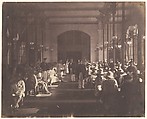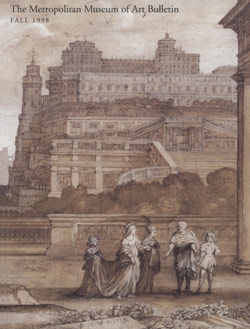The Refectory of the Imperial Asylum at Vincennes
Charles Nègre French
Not on view
Gathered in the light-drenched refectory of a newly constructed convalescent hospital on the outskirts of Paris, patients and staff alike turned their eyes and attention to the man with the enormous camera at one end of the room, Charles Nègre. The resulting image, here in a rare unmounted and unretouched proof print from the artist's studio, is the largest and most engaging in a series of photographs that Nègre was commissioned to make as documentation and celebration of the Imperial Asylum at Vincennes. The hospital was established by Emperor Napoléon III to provide those injured on the construction site or in the factory—"the worker's true field of honor," in the words of one of Napoléon's ministers—with care comparable to that given to the nation's military veterans.
Trained as a painter in the same studio as Roger Fenton and Gustave Le Gray, Nègre was one of the era's most skilled photographers of architecture, possessing a particular sensitivity to the ways in which light and shadow animate the surfaces of centuries-old monuments. Here, he seized upon the streaming sunlight as a vehicle to enliven the structure and texture of his picture and to suggest enhanced activity and health in the hospital inhabitants.
Due to rights restrictions, this image cannot be enlarged, viewed at full screen, or downloaded.


